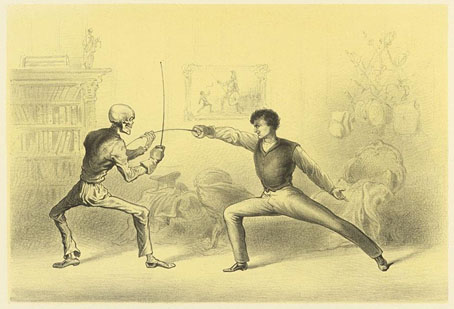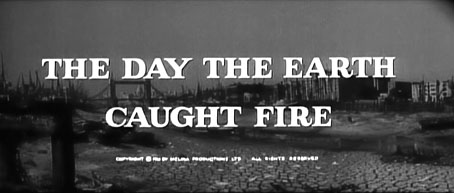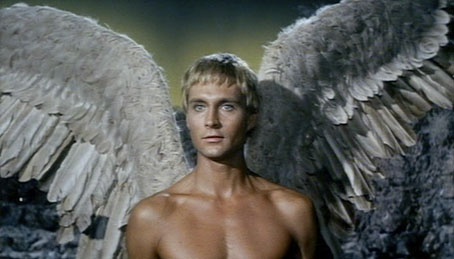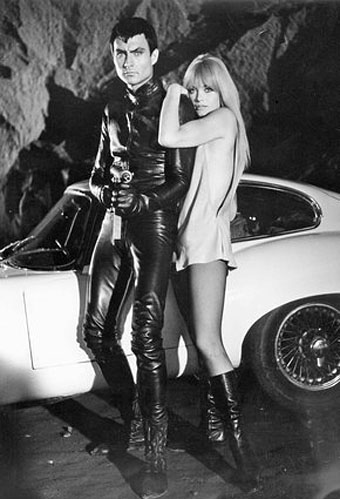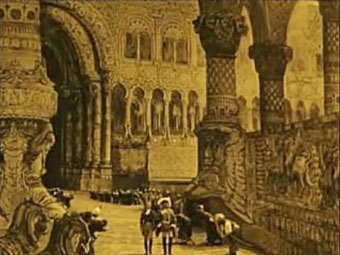Earlier this week Mr BibliOdyssey posted a link on Twitter to a blog entry of his from 2008, a collection of prints by Dutch artist Alexander Ver Huell (1822–1897). If I’d seen his post originally I didn’t recall it so this swordfight gives me an opportunity to draw attention to Ver Huell’s macabre and diabolical work. This unwinnable duel brings to mind the battle with the band of skeletons from Ray Harryhausen’s Jason and the Argonauts (1963), one of my favourite things in the whole world when I was 10. Given how many of the pictures in the Men with swords archive have a quasi-classical theme it’s perhaps appropriate to list Jason and co. among them.
Tag: Ray Harryhausen
The writhing on the wall
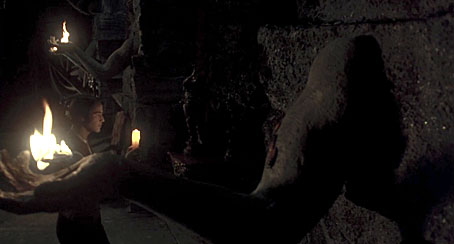
Dracula (1992).
This is the closest you’ll get to a guest post here even though it’s been done remotely and I’ve changed things around a little. Following my mention yesterday of the Cocteau-derived lantern-arms in Francis Coppola’s Dracula, Jescie sent me an abandoned blog post which collected similar examples of the arms-through-the-walls motif. I’ve done this kind of thing here in the past so it’s good {feuilleton} material. Almost all these examples are fantasy- and horror-related which isn’t too surprising, and I’m sure there’ll be other examples in films I haven’t seen. If anyone has any suggestions just remember that hands grasping through doors and windows don’t count with this, it’s through the wall or not at all.

La Belle et la Bête (1946).
Jean Cocteau sets things off in 1946, a perfect piece of fairytale Surrealism and one of the many memorable aspects of this film.
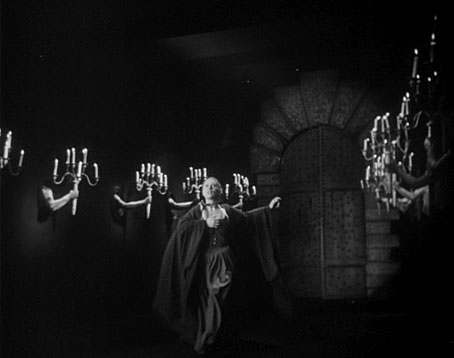
La Belle et la Bête (1946).
Edward Judd, 1932–2009
Like the creations of the late Oliver Postgate, Edward Judd haunts my childhood imagination via the handful of very British science fiction and sf/horror movies he starred in during the 1960s. He did a great deal of acting before and after this—in the Seventies he was a very ubiquitous TV character actor—but it’s his run of genre films which remains notable. In these roles he was always the stalwart Everyman, usually with another older actor as co-star who supplies the requisite scientific explanations.
The first of these, The Day the Earth Caught Fire (1961), was a Val Guest production which followed the success of Guest’s Quatermass films in visiting another space-born calamity upon the world, this time an unprecedented heatwave caused by nuclear tests which throw the earth off its orbit. The film opens with a Ballardesque view of the River Thames parched to a thin stream, and features some great shots later of Judd stumbling through an abandoned, dust-strewn capital. The location work in the Daily Express building on Fleet Street adds to the realism, as does a strong script and decent performances.
John Phillip Law, 1937–2008
Pygar the angel, Barbarella (1968).
John Phillip Law, who died on Tuesday, was featured here last year in a look at Mario Bava’s crazy live action fumetti, Danger Diabolik (below). Law made that film the same year as he played a blind angel in an equally crazy slab of Sixties’ decadence, Barbarella. In a more serious role, he played opposite the very formidable Rod Steiger in The Sergeant which was released the same year; together with Victim, this was one of the first films I remember watching that dealt with same-sex attraction (albeit in the usual angst-ridden mode), with Law’s character being the understandable object of Steiger’s doomed affection.
After those heights, things tended to be more down than up but I do have an affection for Ray Harryhausen’s The Golden Voyage of Sinbad (1974). Law’s Sinbad was pretty good even if he spends much of the time fighting monsters while Tom Baker was great as the villainous Koura. And I always appreciated that screenwriter Brian Clemens made Lemuria the destination of the voyage, a lost continent mentioned by Madame Blavatsky and many of the Weird Tales writers, including HP Lovecraft in The Haunter of the Dark.
Danger Diabolik (1968).
Previously on { feuilleton }
• CQ
• Danger Diabolik
Karel Zeman
Inspiration (1949).
Karel Zemen (1910–1989) is a filmmaker I’m often telling people about but whose work isn’t easy to see, so it’s good to find that YouTube has gained some clips of his animations and examples of the partly-animated adventure films he made in the Fifties and Sixties. Zeman was yet another great Czech animator, and the YouTube collection includes his most celebrated short, Inspiration, which gives life to glass figurines, an unyielding medium that he moves as expressively as if it were clay or plasticine.
The Fabulous Baron Munchausen (1961).
The adventure films are predominantly based on Jules Verne and place live actors into animated settings, many of which are taken directly from (or intended to imitate) the engraved illustrations of the original novels. The animation enabled Zeman to fill his films with dirigibles, submarines and various steam contraptions which would be too expensive to create otherwise. Zeman’s The Fabulous Baron Munchausen took the Gustave Doré illustrations for its visual style which is something this particular Doré enthusiast appreciates, and the film is closer to the spirit of the Raspe novel than the Nazi adaptation of 1943 or Terry Gilliam’s later version. The results are a lot more artificial than the seamless blend of animation and live action attempted by Ray Harryhausen in his own Jules Verne film, Mysterious Island, but the artificiality gives the films a distinctive charm.
• A Deadly Invention aka The Fabulous World of Jules Verne (1958)
• The Fabulous World of Jules Verne trailer (1958)
• Excerpts from Baron Munchausen (1961)
• The Special Effects of Karel Zeman pt. I | pt. II
Previously on { feuilleton }
• Zeppelin vs. Pterodactyls
• Jan Svankmajer: The Complete Short Films
• Taxandria, or Raoul Servais meets Paul Delvaux
• Barta’s Golem
• The Hetzel editions of Jules Verne

